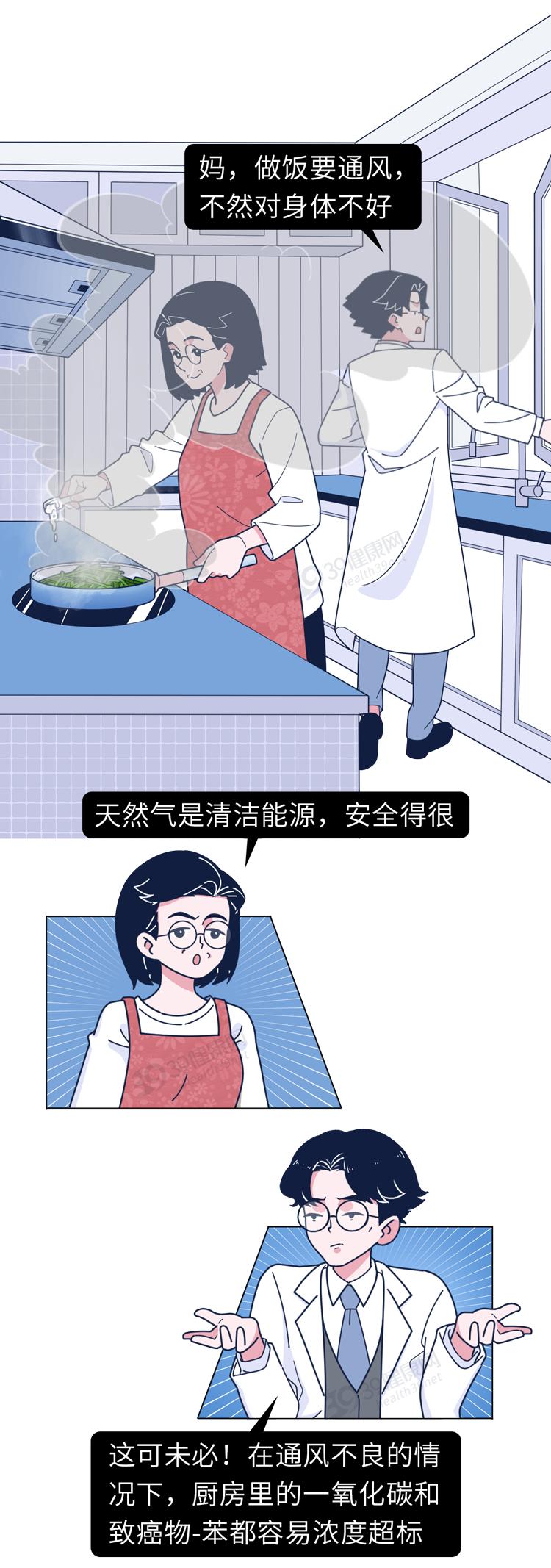The world-recognized first-class carcinogen is hidden in your home.
Original anti-cancer Jiushu 39 Health Network


The research team of Stanford University published a paper in Environmental Science and Technology, saying that during the use of gas stoves and ovens, fuels such as natural gas and propane will release a large amount of carcinogen-benzene.

If the gas stove is turned on in fire mode or the oven is turned on at 177℃, the benzene emission will reach 2.8μg-6.8μg per minute, and the benzene concentration in the kitchen may exceed the health baseline in just 45 minutes, even higher than the benzene pollution caused by second-hand tobacco smoke.

Benzene is a harmful substance. Short-term exposure to benzene can easily affect the growth of blood cells, while long-term exposure may increase the risk of leukemia and lymphoma. WHO issued a warning for this. As far as carcinogenicity is concerned, "there is no known exposure threshold for benzene exposure", and it is best to "reduce the indoor exposure level to the lowest possible level".


In addition to the above examples, soot waste gas, cooking oil fume and cigarette smoke are also major hidden dangers in current life.

In 1980s, xuanwei county was once one of the areas with high incidence of lung cancer among farmers in China, and the mortality rate of female lung cancer was the highest in China.
The investigation found that the villagers here are used to digging holes indoors to make stoves, and there is no chimney and the space is closed. Long-term burning of bituminous coal releases high concentrations of toxic substances, which eventually leads to high incidence of cancer. After the renovation of stoves and the installation of chimneys, the cancer rate of residents decreased significantly.


When frying at high temperature, a series of chemical actions will make food and oil fume stained with a large number of carcinogenic components-benzopyrene. The higher the oil temperature, the more benzopyrene will be produced. When the oil temperature reaches 270℃, a large amount of this strong carcinogen will be released from the oil fume.
Benzopyrene is a typical representative of atmospheric carcinogens. After entering the human body through diet, water and gas, it will quickly "squeak" the whole body, which will not only irritate the eyes and skin, but also damage the respiratory tract and digestive tract, and induce respiratory cancer, skin cancer and lung cancer. But it has a long incubation period, and it is difficult to be found before obvious symptoms appear.


Tobacco will release 69 kinds of carcinogens when burning. Non-smokers will also suffer serious physical damage if they are exposed to toxic smoke for a long time.
Long-term inhalation of secondhand smoke will lead to vasoconstriction, elevated blood pressure and increased heart burden, thus increasing the risk of cardiovascular diseases such as heart disease and stroke; The risk of cancer will also increase, especially lung cancer and cardiovascular cancer; Causes respiratory problems, including asthma and chronic bronchitis.
What is even more frightening is that exposure to second-hand smoke will also affect the next generation, such as premature delivery of pregnant women and low birth weight of the fetus. At the same time, increase the risk of children suffering from respiratory diseases.



In the cooking process, especially when cooking and frying produce a lot of smoke and steam, it is suggested to open the kitchen window to ensure indoor air circulation. Moreover, it is necessary to "open the range hood early and close it late" to discharge harmful substances in time.

Stanford research team compared gas equipment with electrical equipment, and found that using cooking appliances such as induction cookers and electric ovens, benzene emissions were reduced to 1/25 to 1/10 of those of gas stoves. So if you have the conditions, you can switch to an induction cooker and a gas stove when cooking.


Reduce cooking and eating fried food, especially try not to eat burnt food. When cooking, don’t heat the cooking oil until it produces lampblack, which contains many carcinogens. After frying a dish, wash the pot in time to avoid getting those blackened pot scales.

References:
[1]Kashtan YS, Nicholson M, Finnegan C, Ouyang Z, Lebel ED, Michanowicz DR, Shonkoff SBC, Jackson RB. Gas and Propane Combustion from Stoves Emits Benzene and Increases Indoor Air Pollution. Environ Sci Technol. 2023 Jul 4; 57(26):9653-9663. doi: 10.1021/acs.est.2c09289. Epub 2023 Jun 15. PMID: 37319002; PMCID: PMC10324305.
[2] He Xingzhou. Indoor air pollution caused by coal burning and lung cancer and genetic susceptibility —— Study on the etiology of lung cancer in Xuanwei for 22 years [J]. Journal of Practical Oncology, 2001(06):369-370.
Wang Kun, Li Wenpu, Ouyang Hong, et al. Comparative study on indoor air pollution and its control measures [J]. Journal of Harbin Institute of Technology, 2004(04):493-496.
Zhang Linghui, Deng Meiyu. Analysis of risk factors of female lung cancer [J]. journal of clinical pulmonary medicine, 2007(04):392.
[5] Qian Hua, Dai Haixia. Relationship between indoor air pollution and human health [J]. Environment and Occupational Medicine, 2007 (04): 426-430. DOI: 10.13213/j.cnki.jeom.2007.04.032.
Wu Dan. Harmfulness of benzopyrene pollution in food and its preventive measures [J]. Food Industry Science and Technology, 2008 (05): 309-311. DOI: 10.13386/j.ISSN 1002-0306.2008.05.080. [7] Guo Dongmei.
Read the original text